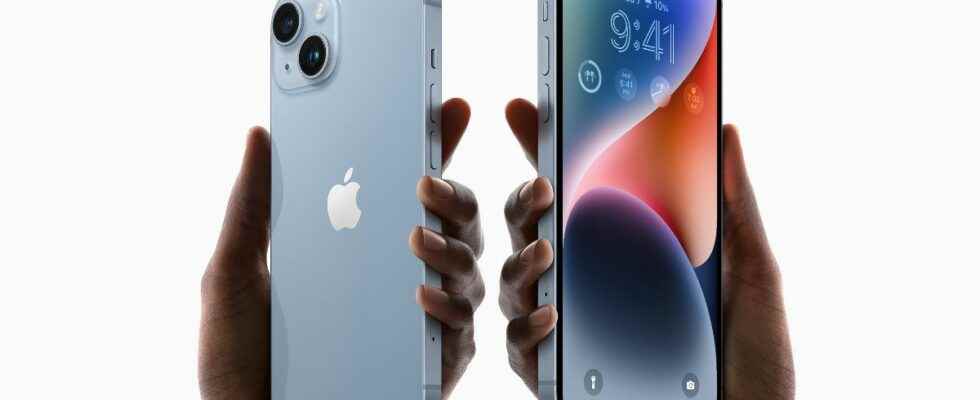Unsurprisingly, the presentation of the iPhone 14 is an opportunity for Apple to highlight its ecological efforts. A positive message that comes up against a reality: even with the best will, producing, selling and using a smartphone is not neutral.
Apple underestimates the carbon footprint of its iPhones. Admittedly, the company has made its environmental impact an important line of communication (target of carbon neutrality, use of recycled aluminium, etc.), and this is a very good thing. However, there are many inconsistencies between rhetoric and reality, as it seems impossible to advocate a certain sobriety when you are such a powerful player in tech, with ranges that are renewed every year. A paradox between offering five years of software monitoring, offering insurance to extend the life of terminals or allowing individual repair of its products, while pushing applemaniacs every year to rush to the latest novelty.
A few kilos less CO2 equivalent for the iPhone 14
Either way, every iPhone now has a Product Environmental Report. The iPhone 13, for example, was given by the company as representing the equivalent of 64 kg of CO2 emitted into the atmosphere for its entire life cycle (extraction of materials, manufacturing, logistics, use and recycling). And like every year, the iPhone is improving slightly. Thus, the iPhone 14 is at 61 kg of CO2 equivalent. Only 6% plastic for packaging, 70% recycled fibers, 100% recycled gold in photo sensor cables, carbon-neutral manufacturing chain by 2030, 100% recycled rare-earth magnets… In short, everything is made so that the buyer of an iPhone has (almost) the impression of making an eco-responsible gesture.
Of course, environmental impact calculations are very complex and the company that manufactures a product is in the best position to make these estimates. On this point, however, it is difficult to judge the relevance of the figures put forward by Apple. As Greenly, a specialist in the carbon footprint of products and companies, points out, “only 10 kg [d’équivalent CO2] are estimated to come from the use of the smartphone, via the recharging of the terminal. But what about mobile data usage? Apple is careful not to include it in its calculation”.
A use of the smartphone which is not without impact
“Given the induced emissions of the 4G network in France, and that a French person consumes 45 GB of mobile data each month, it is therefore necessary to add 50 kg of CO2 emitted over the entire retention period of an iPhone (about three or four year)”, continues Greenly. This drastically rebalances the balance of the footprint of the terminal, and we are getting closer with this analysis to a carbon footprint of the smartphone half from its manufacture, and the other half from its use. Figures from Ademe and several environmental associations speak of a cost attributable to manufacturing estimated at between 70 and 80%. “In addition to this energy-intensive service, we must add the carbon footprint of data centers, which also generate emissions (construction, electricity consumption, air conditioning, etc.)”ends the analysis company.
At Apple, the house datacenter part is called iCloud. A hosting service that calls itself “67% carbon neutral”, which does not include the pollution induced in the construction of infrastructures. Once again, it’s hard not to wince between the communication that presents us with a green and increasingly eco-friendly iCloud, and another message repeatedly delivered during the manufacturer’s last conference: the iPhone is the most used in the world and iPhone owners take a lot of photos with it.
We learned that iPhone users have taken some 3 trillion photos in just one year. 3000 billion files which, most of the time, are immediately transferred to Photos, and therefore an iCloud server. A huge figure which, when we talk about sobriety and eco-responsibility, once again gives food for thought, even if the transition to HEIC has enabled most photos to significantly reduce their weight (a few megabytes).
